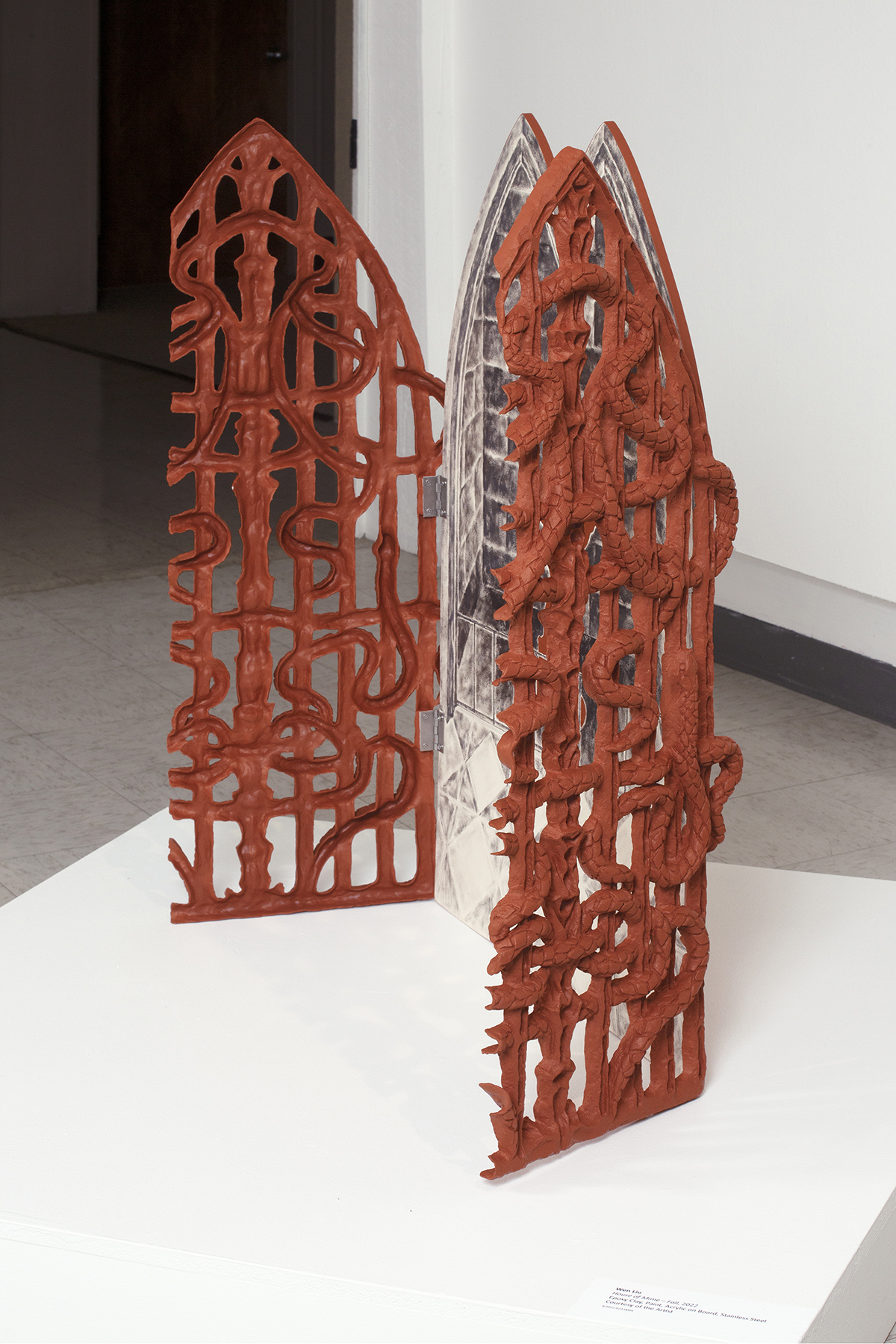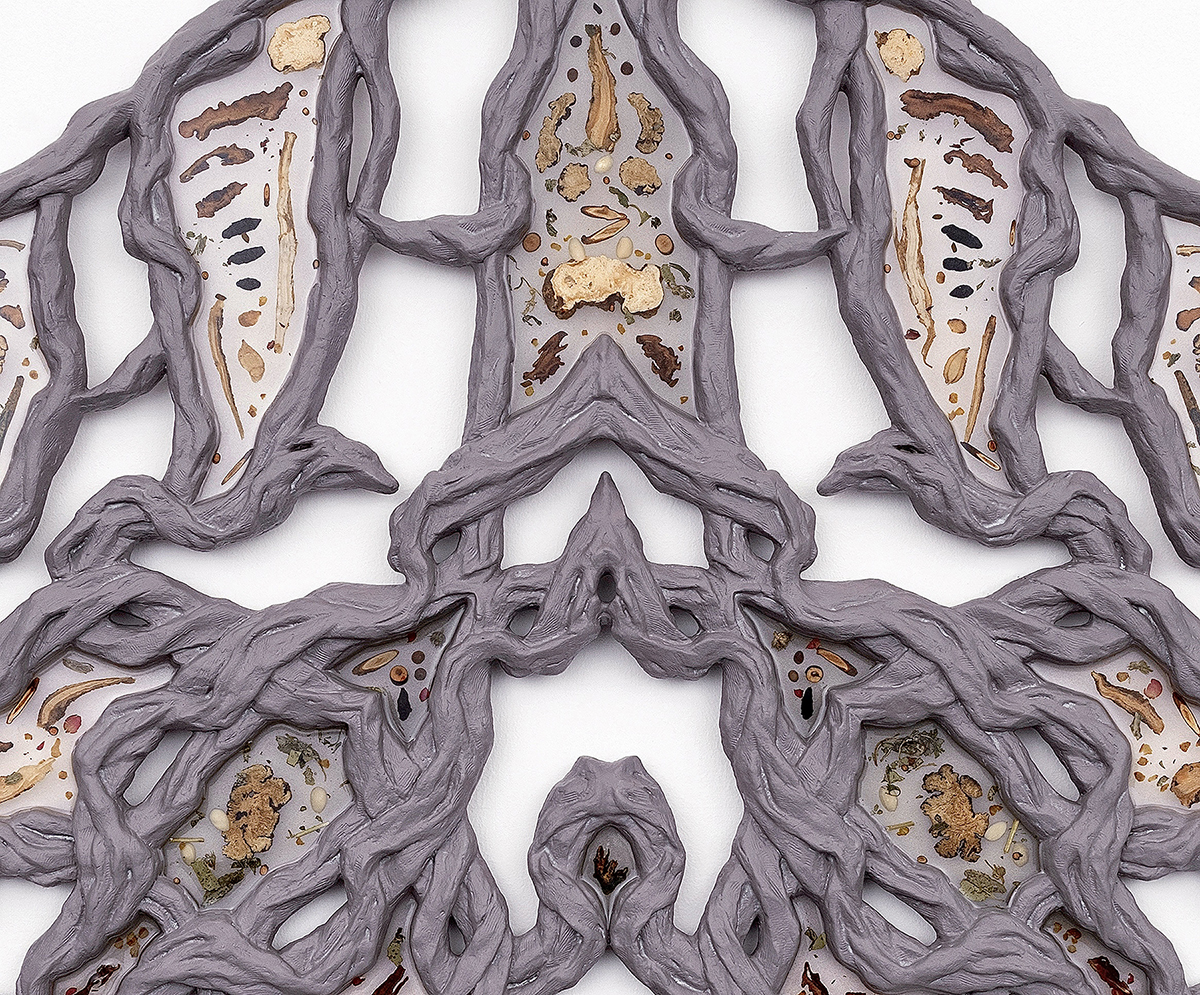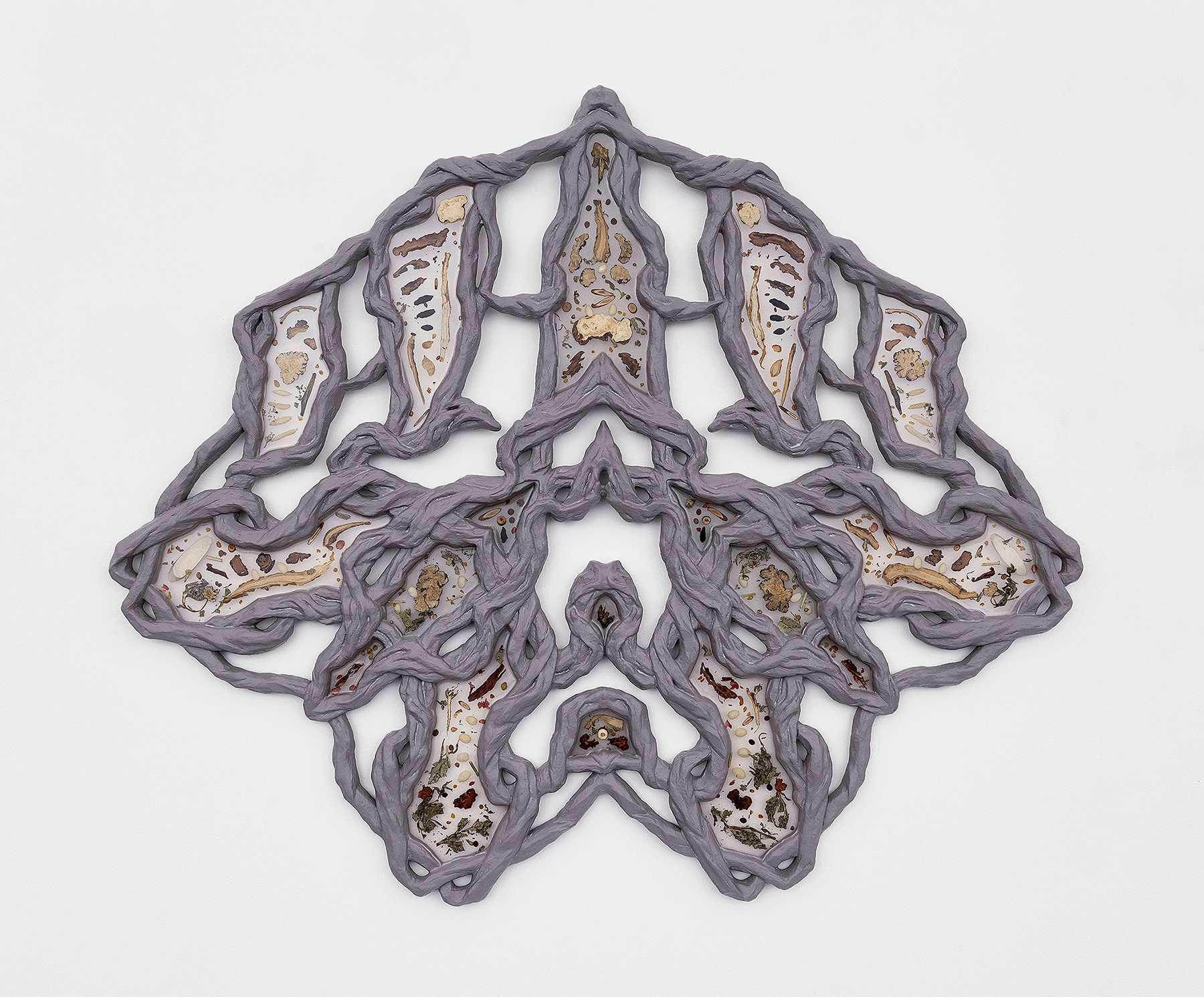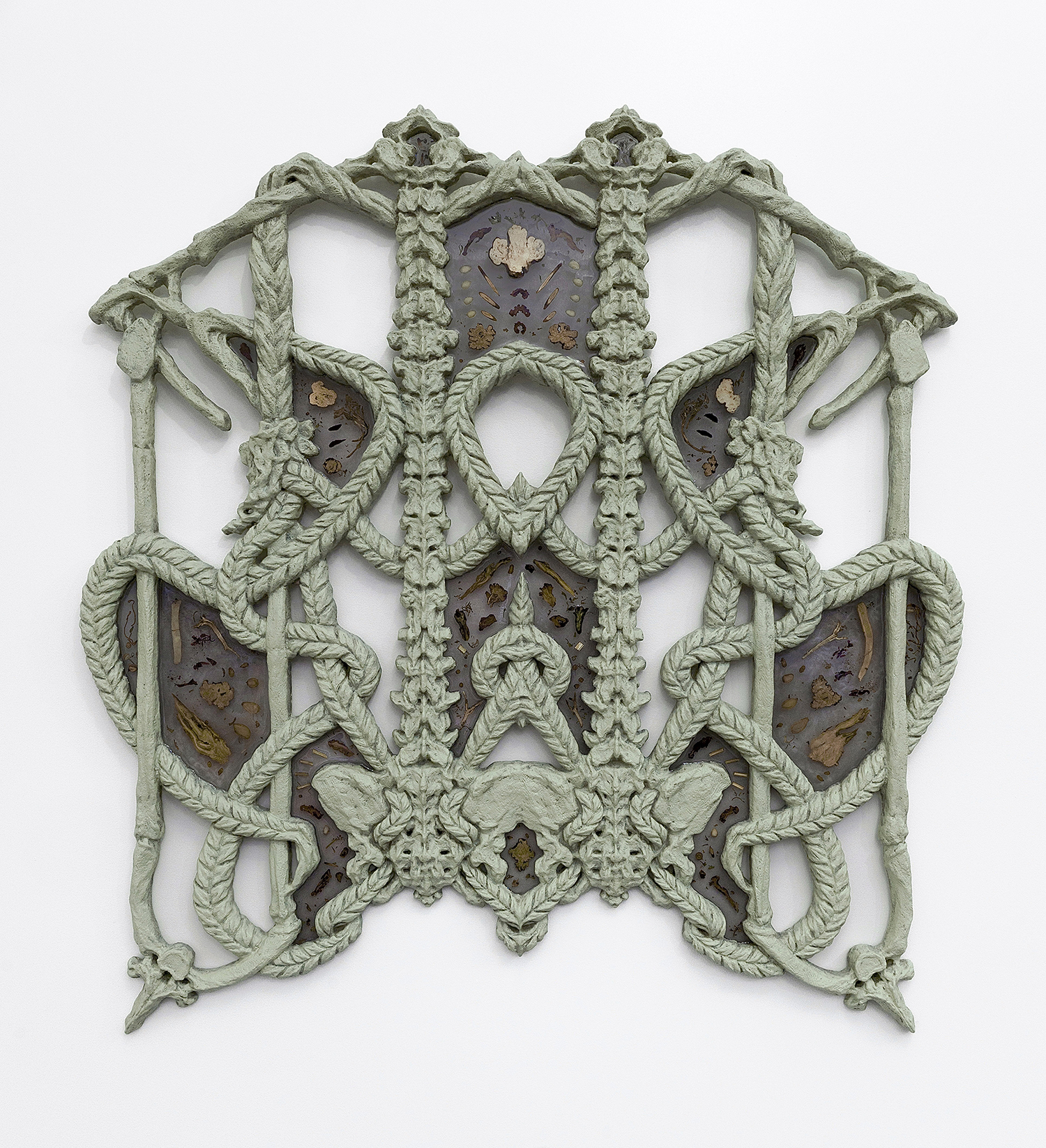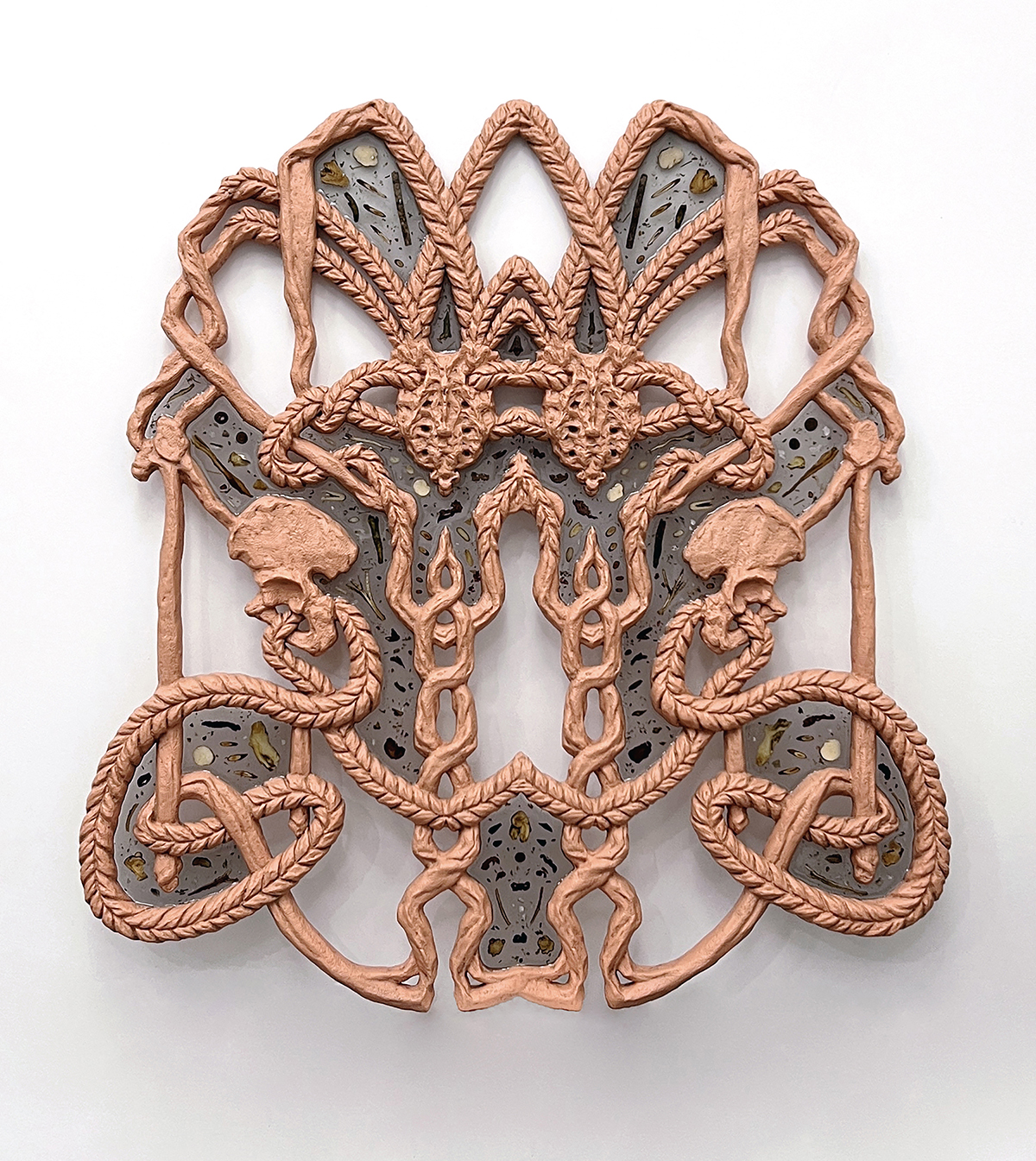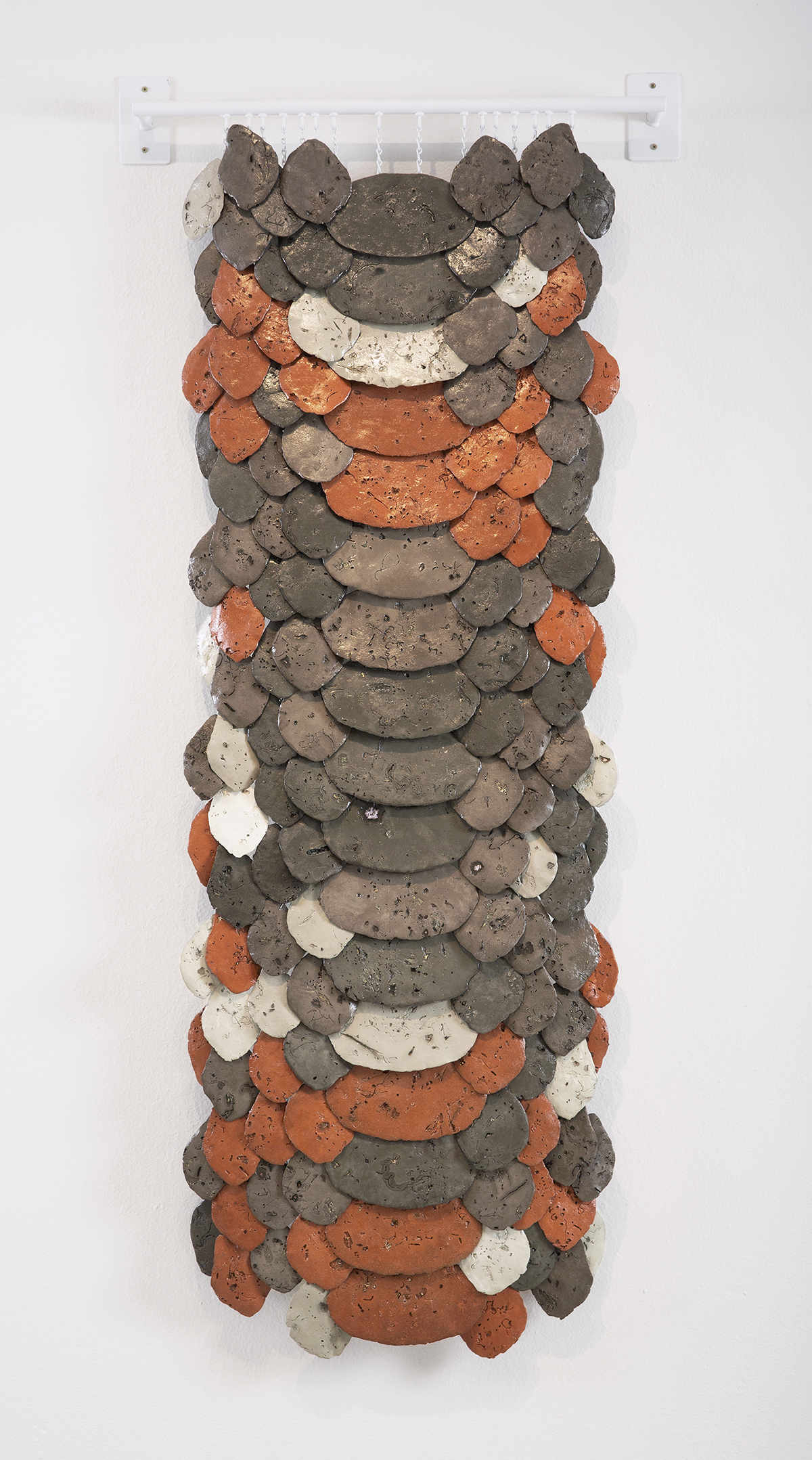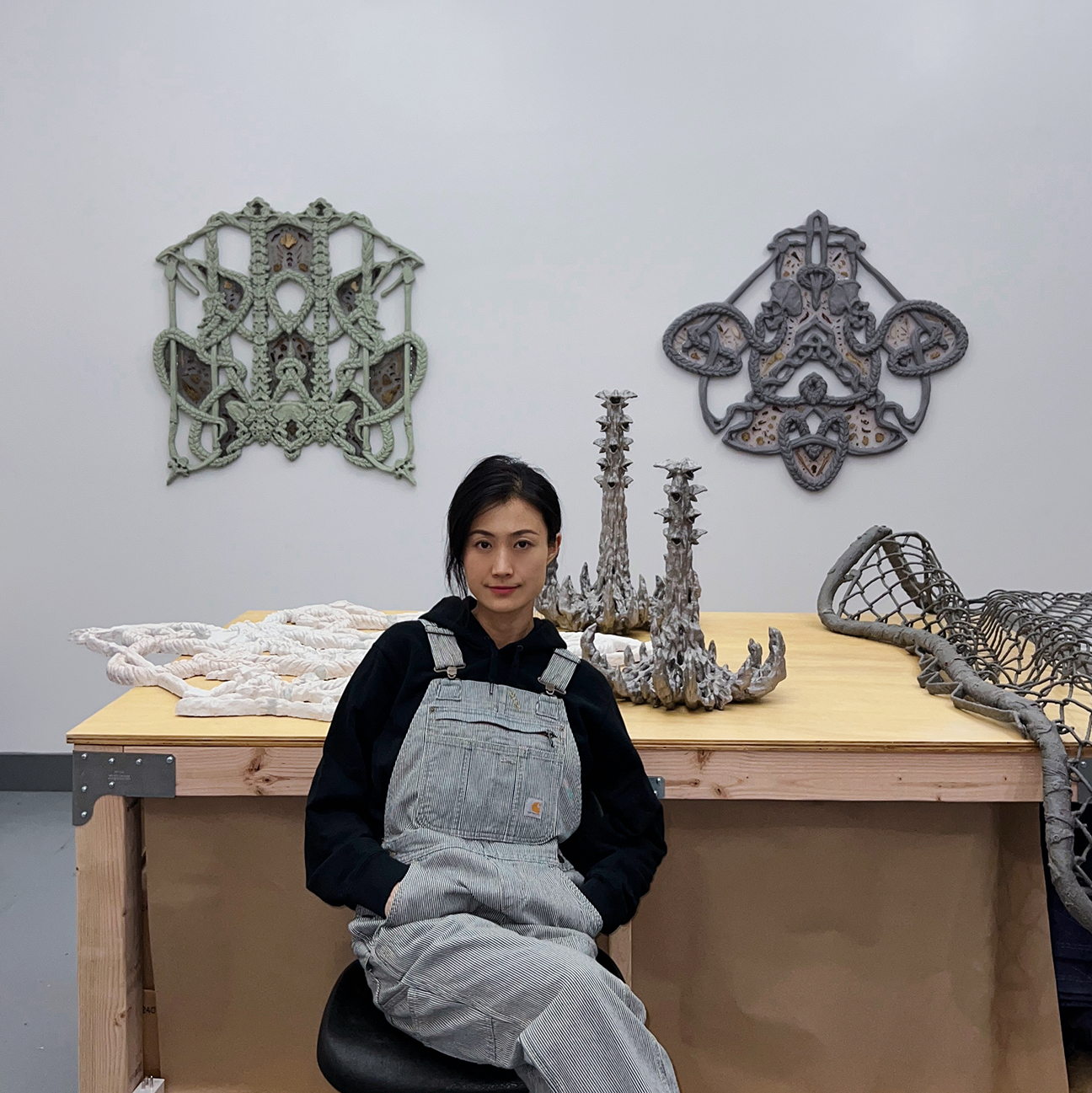
Where things happen #28— November 2024
The practice of Chinese but US-based mixed media artist Wen Liu reckons with a labor-intensive process that transforms and translates seemingly organic forms emerging from an intuitive process into demanding molds, which will then generate the final sculpture, allowing the artist to visualize complex phenomena that still connect the human bodies and health to nature.
Her nature-inspired sculptures are, in fact, embedded within the principles and materials of herbal medicine, becoming sort of embodiments of organs within ornate frames. At the same time, the molding part evokes this sensation of loss, abandonment, and something to leave behind to start new chapters
We met the artist on a sunny day in early October in her studio in Brooklyn, where she recently moved. Wen Liu is originally from Shanghai, China, and moved to the U.S. to pursue her MFA at the School of the Art Institute of Chicago. As Liu confesses, it hasn’t been easy to find places to accommodate her demanding mold-making practice, but this has become a key aspect of her practice, both on the empirical and philosophical level.
Wen Liu has long been fascinated by the process of molting insects and animals, which allows them to pass and evolve to other forms as their skin grows, heals and transforms. Similarly, her sculptures take form and evolve inside these hand-carved containers or skins that she makes herself. Despite the high refinement of her sculptures and their elaborate ornamentation, in fact, Wen Liu makes everything by herself in the studio without outsourcing any fabrication. The process to get to the final artwork is deeply fascinating.
As Wen Liu shows us in the studio, she would start with extremely intuitive shapes generated by black ink moving on paper and casually creating some forms that can resemble butterflies or flowers. The process is the same as the one to make the prompts in the so-called “Rorschach Inkblot Test,” which will then analyze the person’s responses to the inkblots, insights into an individual’s social behavior, thoughts, and emotions emerge, often unveiling deeper, unconscious aspects of their psyche. From those, she will then elaborate more detailed drawings that will guide her in shaping the mold from which the sculptures will originate.
It’s somehow intriguing how this part of Wen Liu seems to link and echoes with the alternative approach applied by Chinese medicine that inspires her work, and which is based on descriptions of the symptoms, on listening to the patient trying to identify and translate into words an abstract idea of pain. In both cases, the accuracy of the treatment will depend on the ability to translate abstract forms into meaning.
The work of Wen Liu appears to move in a similar dimension as a bridge between the natural worlds and what language finds difficult to translate about our body and its relation to the world.
As Wen Liu explains, she started exploring and incorporating herbal medicine into her work when her father passed away. For all her life, she has been deeply connected to these alternative and very natural forms of healing, that rely on a century old knowledge of Eastern Medicine. As she recounts, her father used to tell her that she was born because they had been drinking herbal medicine for a year. Growing up, she realized this was the most natural thing, better than other systems, as purely based on flows or energies that translate into symptoms of our status, but then need to be articulated into language.
For this reason, her sculptures from the “Inarticulate Trace” series started to embed themselves within organic materials as fragments and pieces of herbal plants.
At the same time, the structures of the final wall sculptures Wen Liu creates appear to live at this enigmatic intersection between the plant, animal and human worlds. What appears as a section of a limb or a hair braid might also remind a snake or a part of lianas. On the other hand, those enigmatic ornate structures could remind us also of gothic windows or portals, creating an engaging debate in their reading between culture, nature and artifice that somehow turns as revelatory of the series of structures that repeats in nature and humans have then translated in our Anthropocene, as looking to make it more “organic” and harmonious. While having those alien and mysterious forms, Wen Liu’s creations also maintain a particular fluid organic development and articulation of their forms, as the particles of materials that compose them inside the molds behave had cells replicating through mitosis until reaching a new final form of a new creature within the evolutionary cycle. In this sense, her sculptures truly embody both life and material at the same time. Eventually, Wen Liu’s works function as both powerful visual representations of the organic structures that link human bodies to nature and reminders of what most often remains lost in translation in this relation. Geometries are repeating within a secret order of the cosmos.
As Wen Liu recounts, her practice became closer to nature after a year-long residency in New Mexico, which made her confront the wild landscape and its numerous inhabitants. That period also involved extreme experimentation, traversing various media until she arrived at what she’s working on today, which progressively crystallized a very precise artistic language.
However, most of these sculptures still appear to be molting even when solidifying in a final shape. Their hybridity communicates this dynamic status of potential change, creating a continuity between the process, the meaning and the final shape.
When we met, Wen Liu had just returned from a trip to Tuscany. On her working table are books by Il Ghirlandaio and Piero della Francesca. The artist admits that she has been deeply fascinated and inspired by frescos and would love to experiment more with that technique in the future and, in general, add more painterly parts to her works.
Following her solo booth at NADA last year, Wen Liu has a few museum presentations already lined up and some projects with galleries, which will allow to continue to grow in her practice.
In general, Wen Liu’s practice shows that the artist has clearly found her own language in terms of process and themes. However, as a code, this could potentially expand exponentially, in creating powerful and much-needed metaphors for a new symbiosis at the critical intersection between nature, culture and human technology.






















